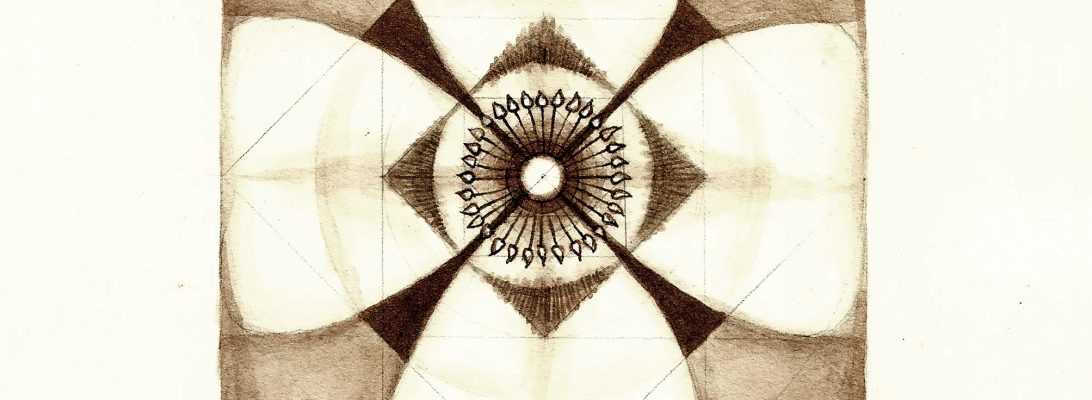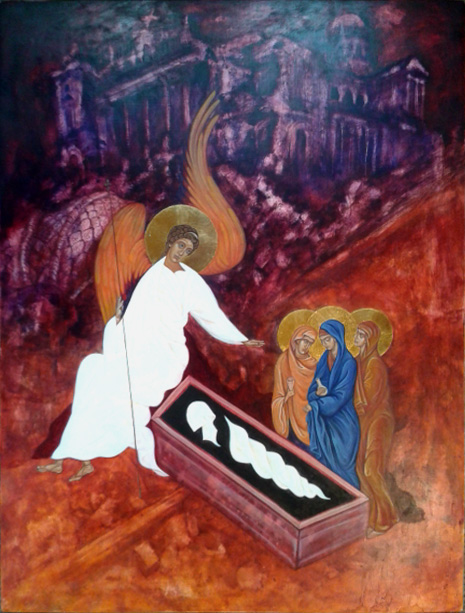I write you running, first.
I sit at a small table, in a one-room cottage
alone, waiting.
But you – you are running.
Running at full sprint; away from me.
Beneath you is a gravel road,
Beside you is beech forest, and a river.
Ahead of you is the lake.
You run for it.

I am at the table.
I look at my hands.
Small delicate hands, ladies hands I suppose.
Designed for embroidery and poems.
Not this rough cottage and it’s dirty pails.
There is an ink stain on my right hand.
I say “Der Zeigefinger”

You are running the radii,
aspiring for the circumference.
This edge of our existence,
the magic circle of our biography.
You are running away from me.
I say “Im Anfang war die Tat.”
[In the Beginning was the Act.]
Events happen to you. Drama! It is yours.
Not mine. I just watch you, from this table.
And then there’s her.
That terrible demi-god.
Inscribing us both. Defining our 360.
You cannot escape her clumsy manoeuvrings

– but I will not let her move me.
I will remain. Seated at this table.
Encounter – Ignorance
You are heading straight for two young ladies,
in quantities of white satin.
They are in your way, in your path.
They stand with heads held high,
They are superior to you in every way.
They are English.
They watch you, yet ignore you.
 “Something silly?” says one.
“Something silly?” says one.
“A little giggling … ” responds the other.
“Oh, quite so, darling,” crooned the one.
They will not get out of your way.
You plough straight through them!
Through curtains of satin.
Ha! I’m so proud of you!
Encounter – Zeal for Death
Knock! Knock! Knock!
I look up from my desk.
I say “Entre.”
Three full fat bodies fill the door frame.
Framed by my eye. The frame of this work.
The three of them, who demand toll.
Those three detainers.
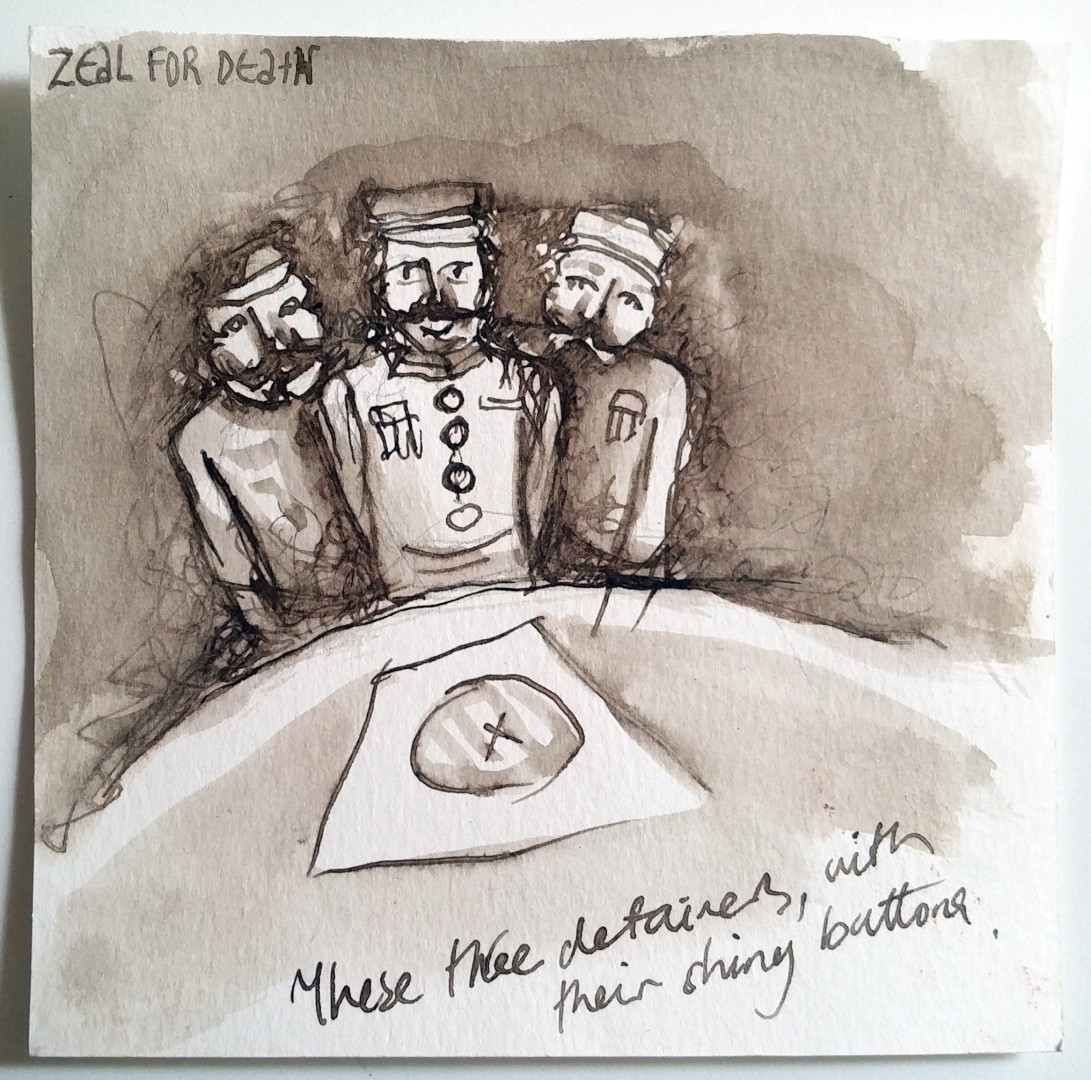
A shiny button, a silver medal, a green and yellow ribbon.
Fat hands clasp a terrorized parchment.
Dirty boots. A muddy print on my clean hearth.
The fire smokes, splutters in small protest.
I ask “With what mandate have you come?”
They wave a scrap of paper.
Inscribed with royal insignia.
“War Regulations. Arrest Without Warrant.
Detain at Discretion Of the Minister of Defence.”
The say things that I don’t [won’t] hear properly.
“Close your business. Report to the police station.
Registration. 20 miles.
No communication with enemy country.”
“Enemy Alien”
Enemy Alien.
I just say “Rennen!”
You are running.
Encounter – Foolish Wisdom of the Flesh
You pass young lads on the road, sporting leather strips and balls.
“Where are you going, lady?”
“Lady Frau! Lady Fry!”
“You’re an enemy alien,
you’re an enemy alien,
an enemy alien!”
They trip you up, on purpose.
You graze your knee. It bleeds.

Then they tie you to a tree! You are stuck!
Trapped, in a prison made by children.
This prison of fools.
I take a map. And a compass.
I draw an X. This is where I am.
I draw a circumference. 20 miles from X.
This is where we are allowed to be.
The extent of our [current] permitted existence.

But now you are stuck! You must keep moving.
Because I’m sorry to say,
your mother-in-law is coming!
Encounter – Wrathful Wisdom
Roimata cries for her slaughtered bird.
As angry wiry fingers untie your bonds.
“Where are you coming from – son-killer!”
“Where are you going? – destroyer!”
She full spits in your enemy face.

But you must leave the grief.
You are now free from this tree of death.
Run!
You run away from her.
At the lake you jump in a dinghy
and begin to row.
Faster!
His mother is crumpled on the beach.
You take out a handkerchief and wipe your face.
Our tears and her spit are the same.
Encounter – Desire
And, there he is! Your husband, your mana.
With you, in the boat.
Glorious in his soldiers fit-out. Shiny, brand new.
He is rowing steadily, surely. Of course.
You think “This is enough.”
You think “How good it is just to be with you.”
You think “It’s more than enough.”
You have disappeared from me, in your joy.

I have never felt so alone.
These walls are so close.
This fire is so hot.
This table is too large.
This piece of paper is too small.
But I will write you back to me.
Encounter – Excitement of Death
Remember, his delirium?
Delirious for adventure?
You did tell our husband.
“It’s the nearest man who’s killed.
Be always behind!”
Manaia did not listen.
He flew ahead,
his human body following obediently.
On the day of the attack. Trench No. 2.
They suggested at first a slight wound
but you knew that it was the end.
For him; for that other perfect us.
With a sudden spin,
He grabs his rifle.
He shoots at the edge of the lake.
He says “Got it!”
He said “Good bye my Aroha!”
With a sharp crack. He is gone.
But never forgotten.
You see, now there is just – us.
And this fog.
This darkness.
This edge.

You have forgotten me.
I’m just ahead.
Past the fog.
Where we are spread out to the extremity.
So let us concern ourselves with the boundary.
You stand on a frontier,
your toes curled over the rim.
A deep dark endless canyon,
a cliff stretching to infinity.

To be sure, this place of crossing is frightening, to you.
It’s depth is great, it’s height is staggering.
This cliff is separating –
This canyon is strengthening –
It supplies the form of me [the mater/matter]
It lets you see me clearly [the pater/pattern]
Yet let us be of a single mind and
without hesitation, pass by.
Pass over the boundary.
Do not look back. Look ahead.
Run! Leap!
Jump!

You are returning.
Yet you are travelling in the same direction.
Maybe you are ascending?
Across a flattened ruin
littered with wrecked narratives and duration debris.
The detritus of story.
A sad story, a senseless story, after all.
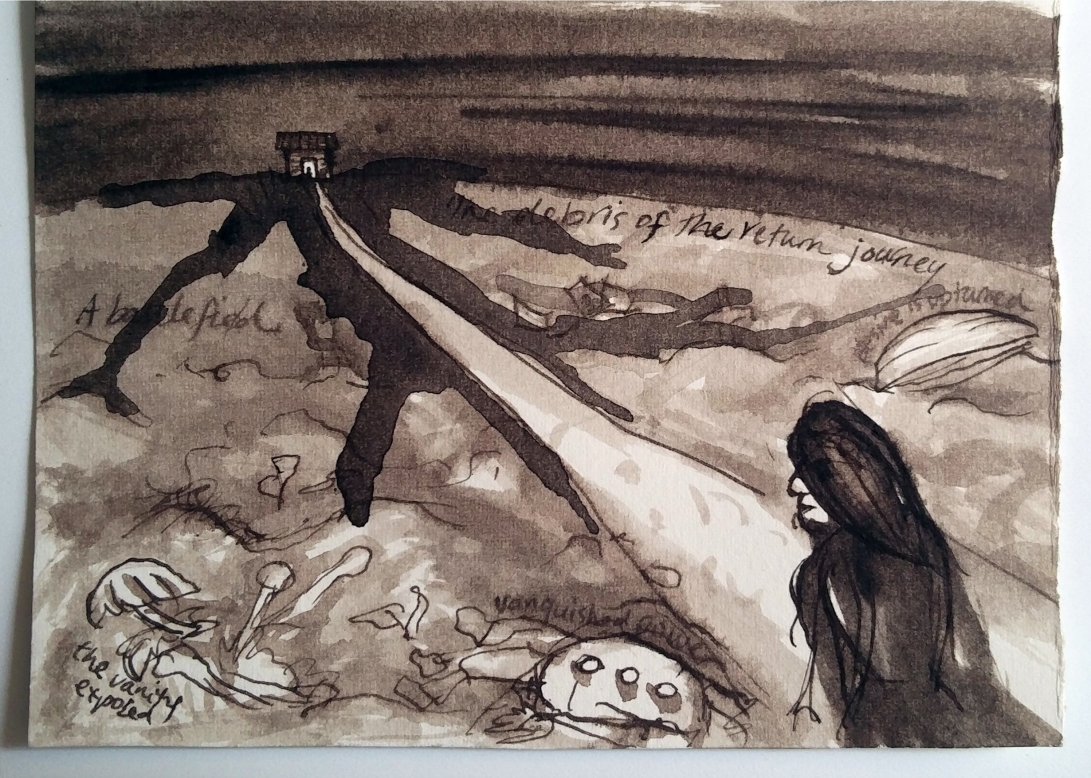
Across this vast desolate distance –
there is no space.
You can see my cottage quite clearly.
My window is glowing with candlelight.
And there I am, at the window.
Looking at you.
You get to my door.
I hear you knock.
I am knocking.
I let you in,
my flower.

Pythagoras says
“When the art of reflection is discovered,
dissension diminishes and concord increases.”
Let us yield to the sentiment of equality.
Let us adjust our affairs in a friendly fashion – with equality.
Let reflection be our rule.
© Gaylene Barnes, 2019


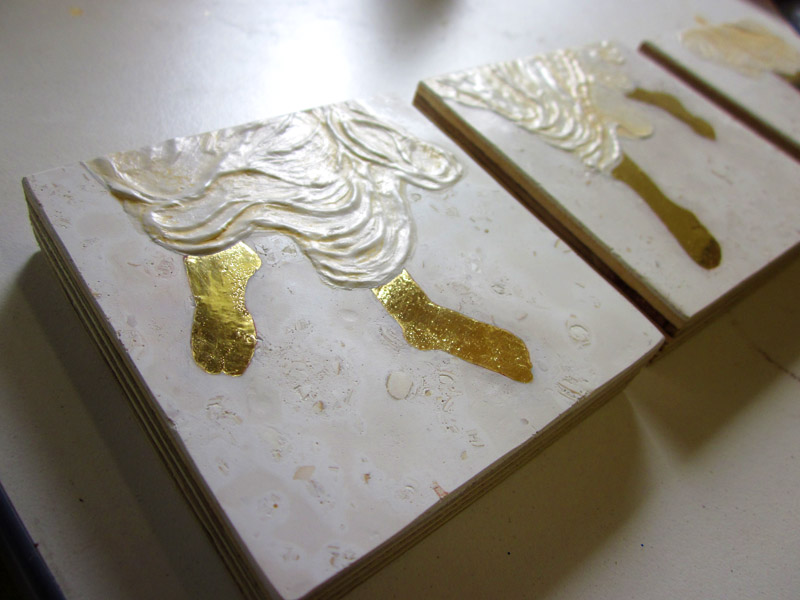
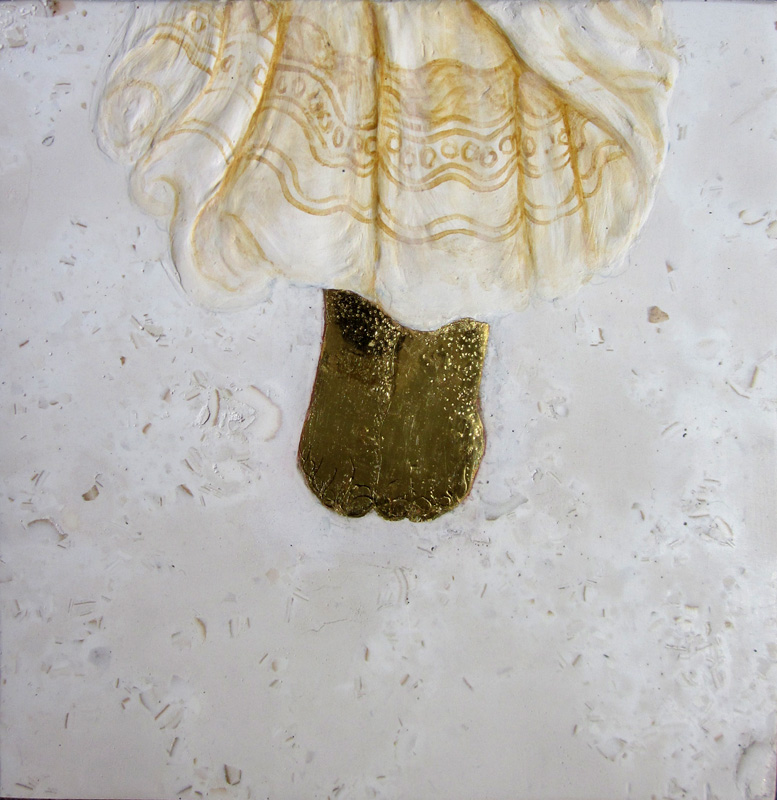
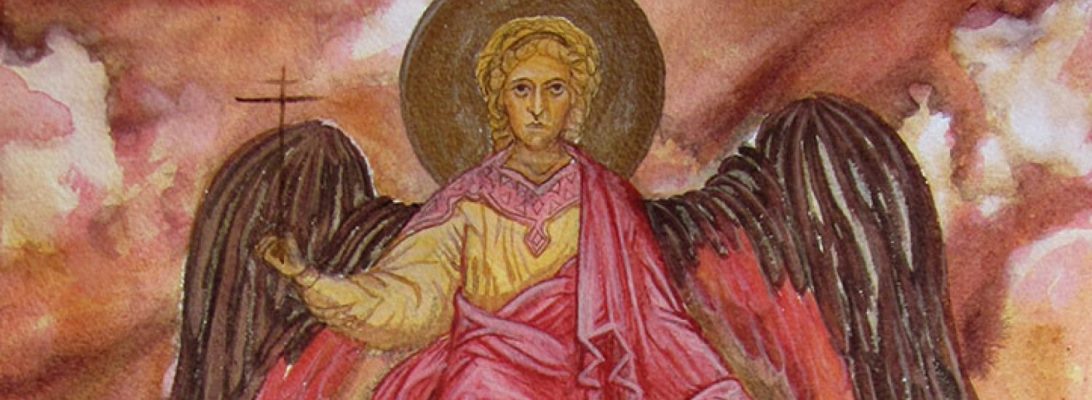
![St Michael and the Super Sonic Parachute [Pigment Watercolour and Gold on Paper, 2014]](https://sacredcraftstudio.files.wordpress.com/2016/04/st-michael-and-the-super-sonic-parachute_sm.jpg?w=757&h=1024)

